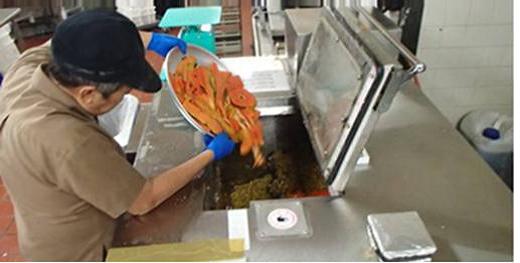Recycling food waste
Product Type: All
Stage: Handling & Storage, Distribution & Marketing, Consumption
Problem: Food waste accounts for a large amount, but only few of it is recycled.
Solution: Food waste recycling pilots
- In 2014, 788,600 tons of food waste was generated, of which 101,400 tons (13 per cent) was recycled. Besides the effort and energy needed to collect and dispose of it, food waste also contaminates recyclables and compromises recycling efforts, and causes odour and pest issues if not managed properly.
- Over 20 premises, including hotels and schools, currently segregate their food waste and use on-site food waste treatment machines to convert the food waste into compost for landscaping purposes or water for non-potable use.
- The on-site food waste pilot at the hawker centres aims to test the economic viability and operational feasibility of food waste segregation and recycling in hawker centres. The hawker centres will each have an on-site food waste recycling machine which will convert segregated food waste and leftover food from the hawker stalls to either water or compost.

- The district-level food waste pilot aims to examine the economic viability of district-level food waste collection and off-site treatment at a centralised recycling facility. Source-segregated food waste from the Clementi district – such as from shopping malls, schools, hospitals and office buildings – will be transported to an offsite test facility located at the Ulu Pandan Water Reclamation Plant. The pilot will also assess the feasibility of recovering energy from food waste and used water sludge via anaerobic co-digestion.
Resource :
National Environment Agency, Singapore (http://www.nea.gov.sg/docs/default-source/corporate/COS-2015/cos-2015-media-factsheet---food-waste.pdf)
